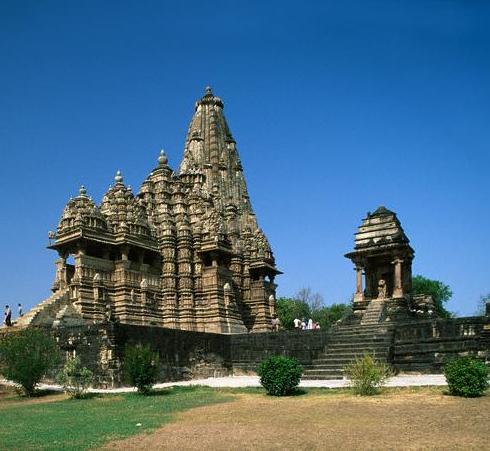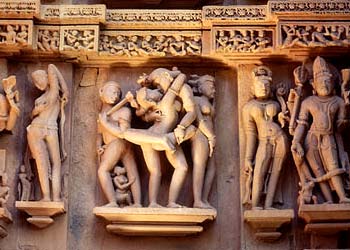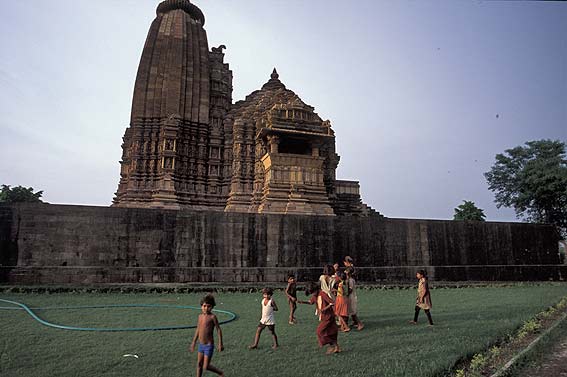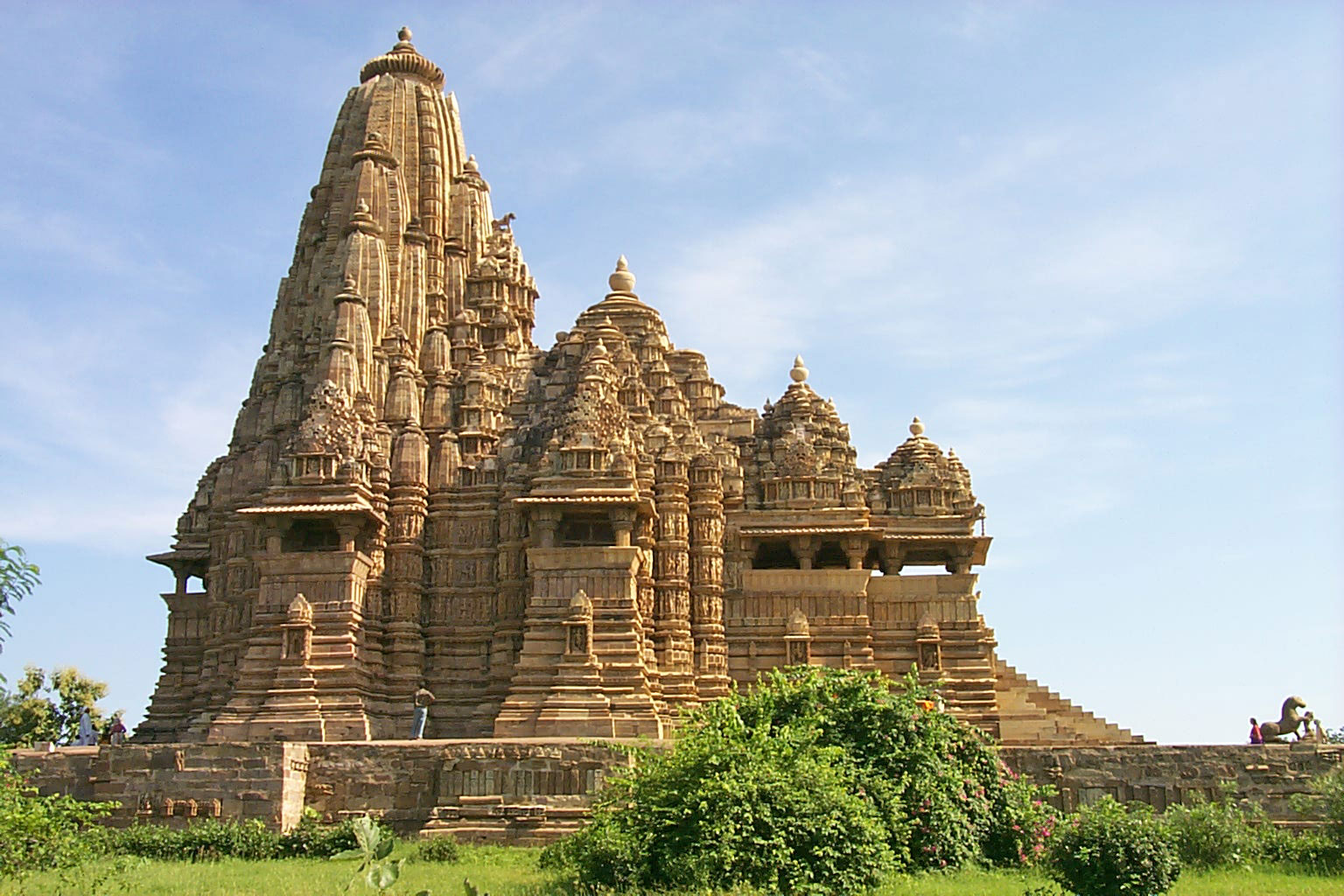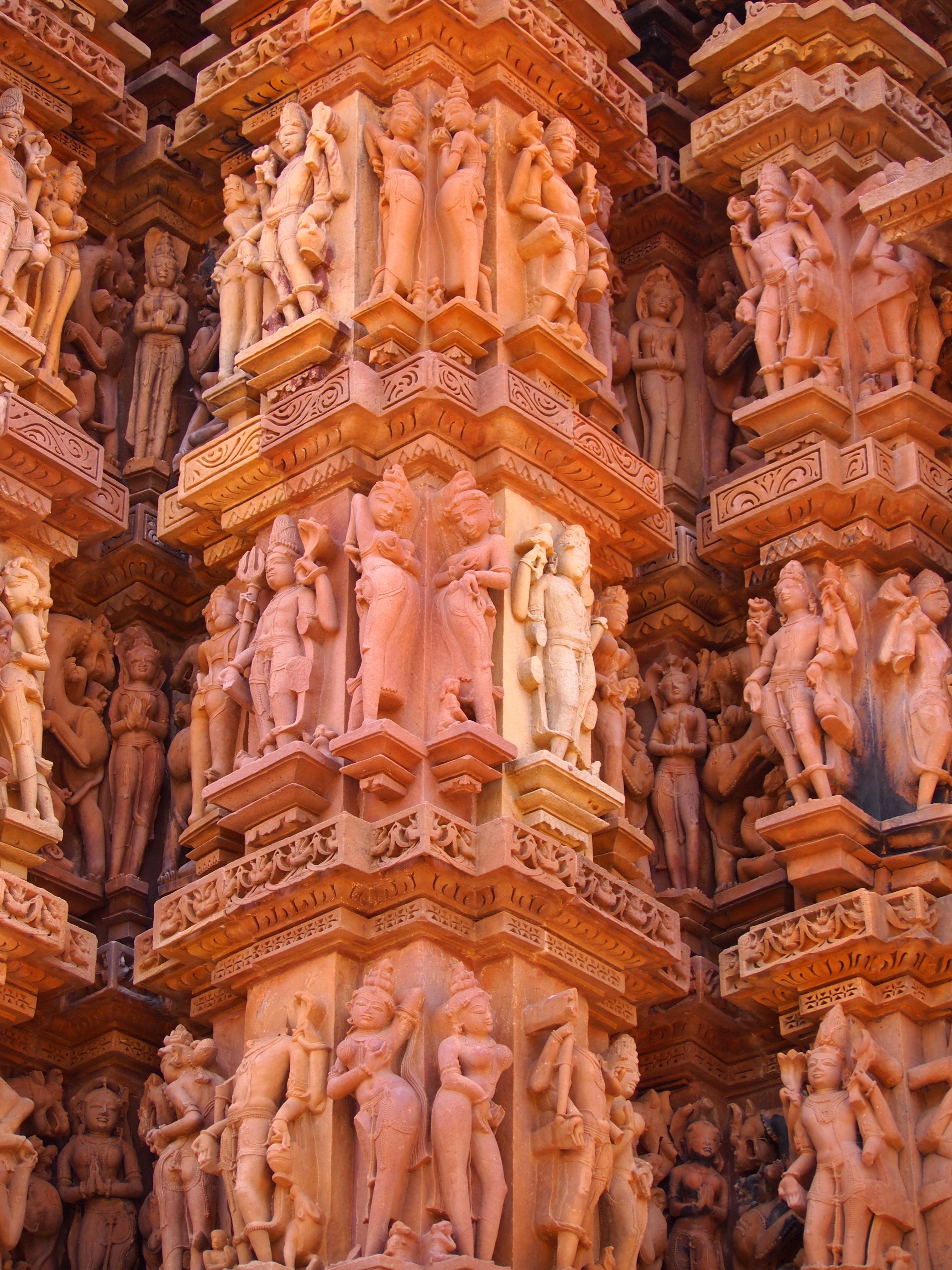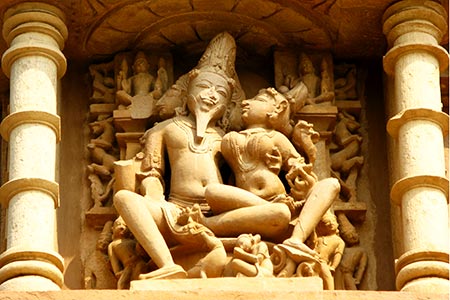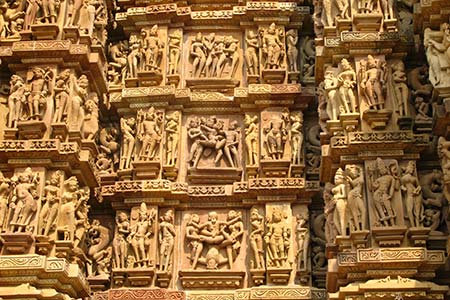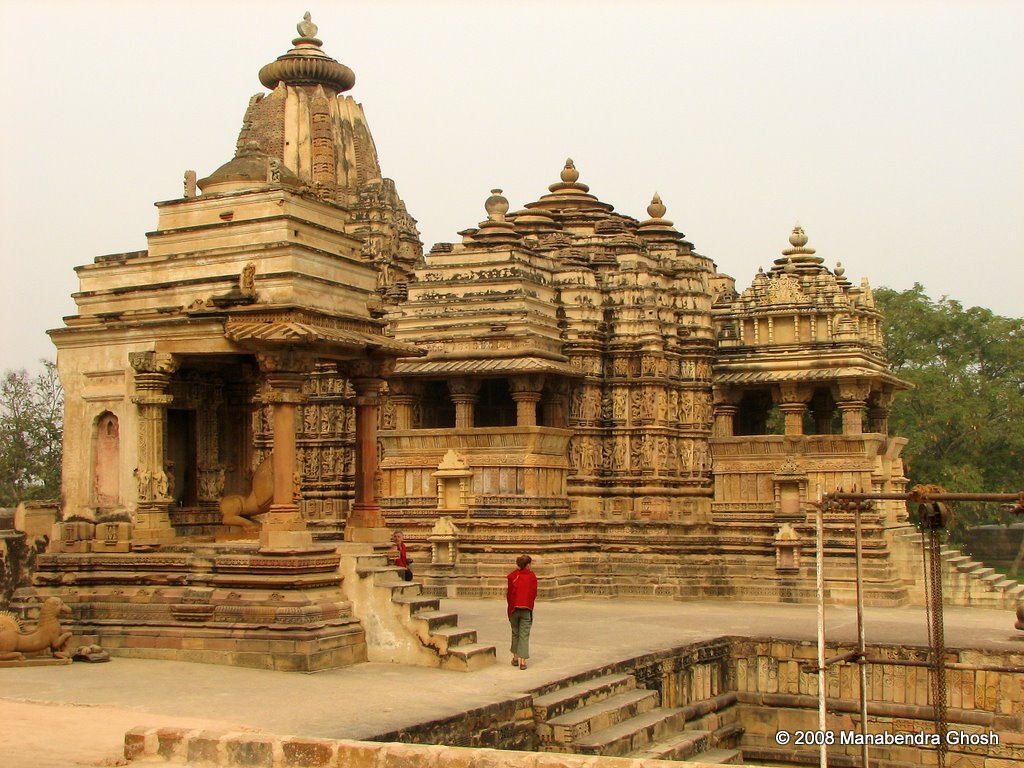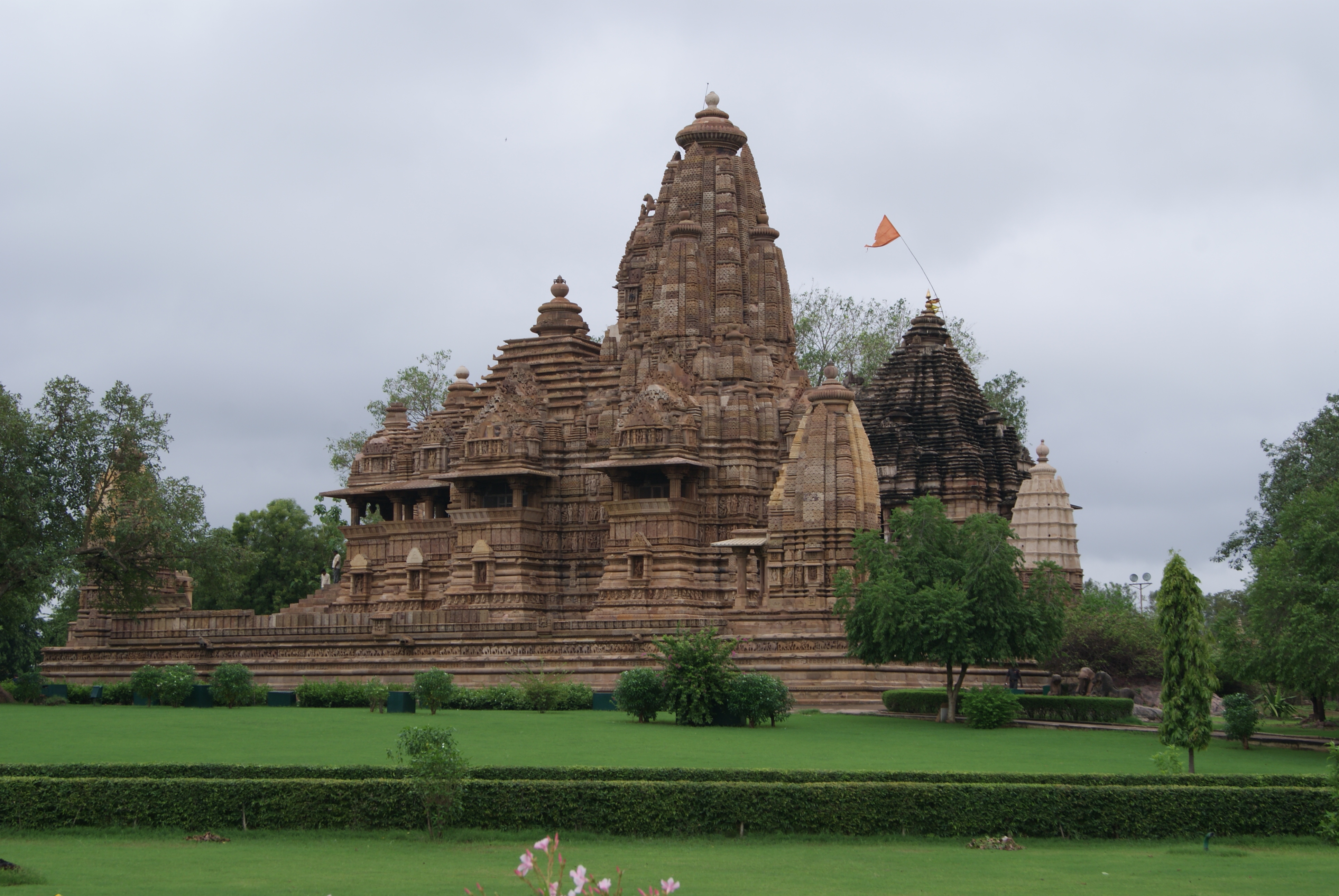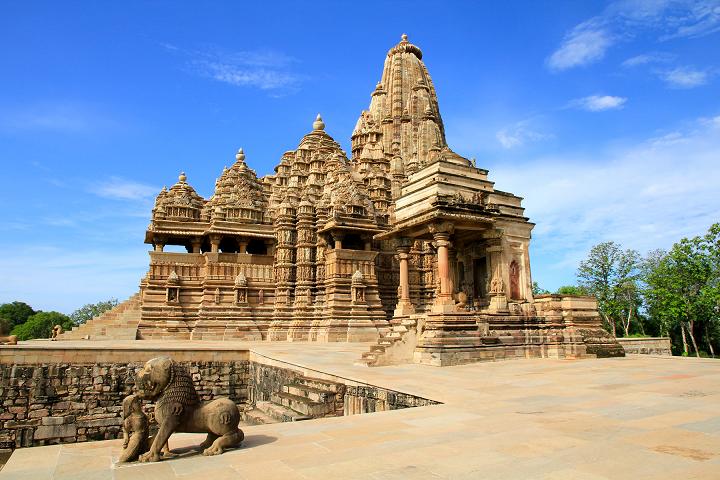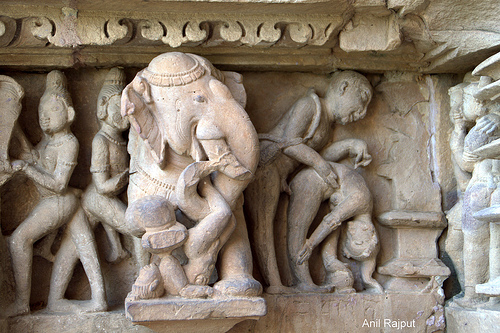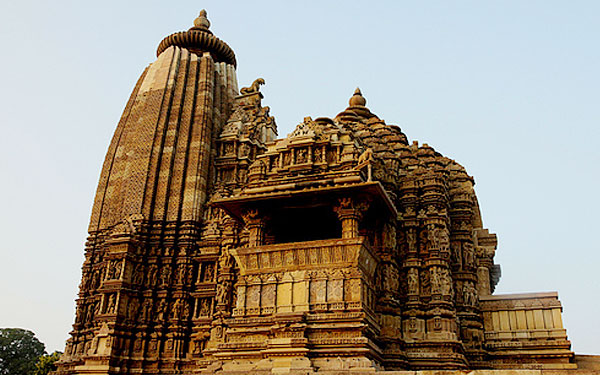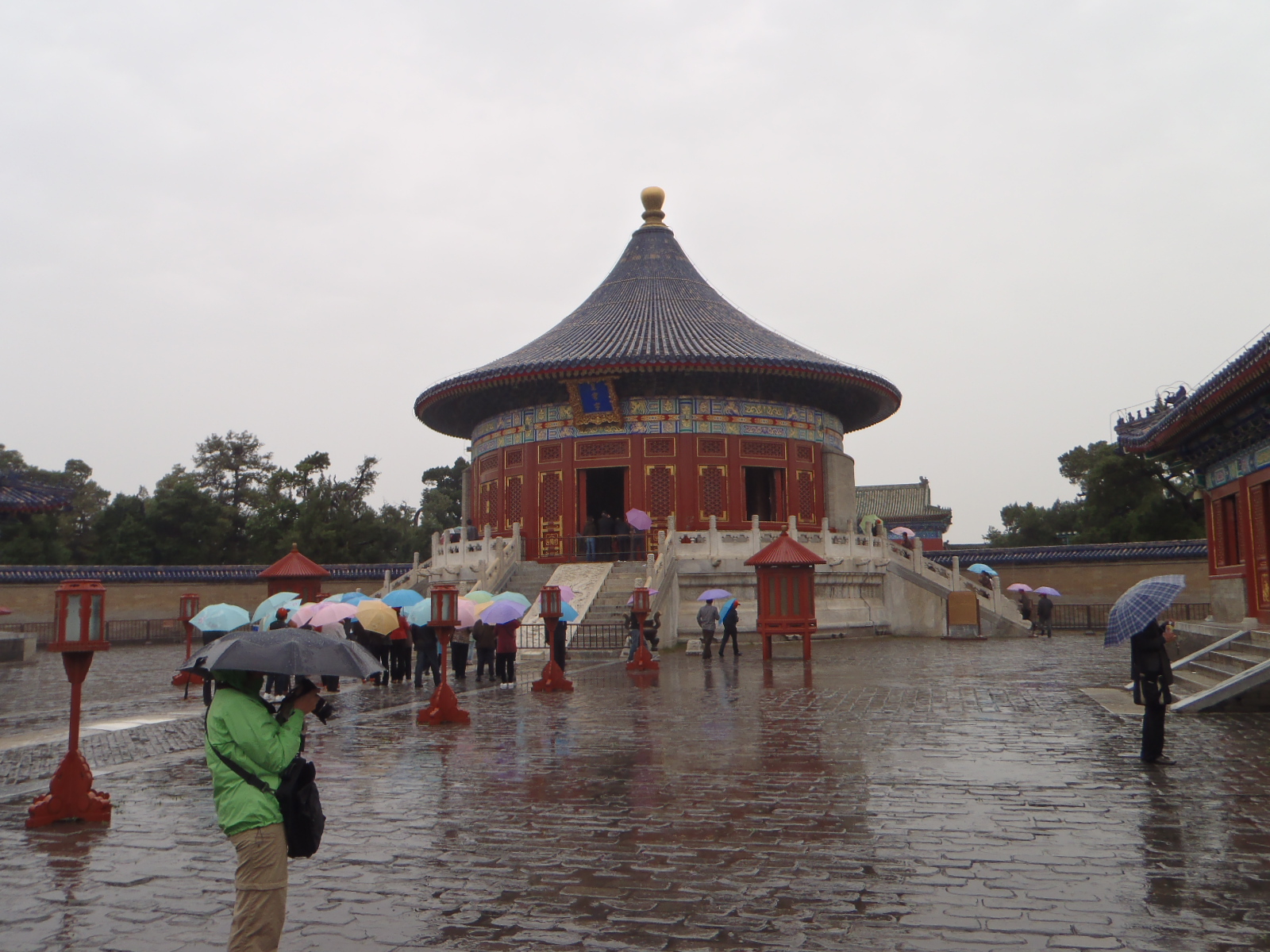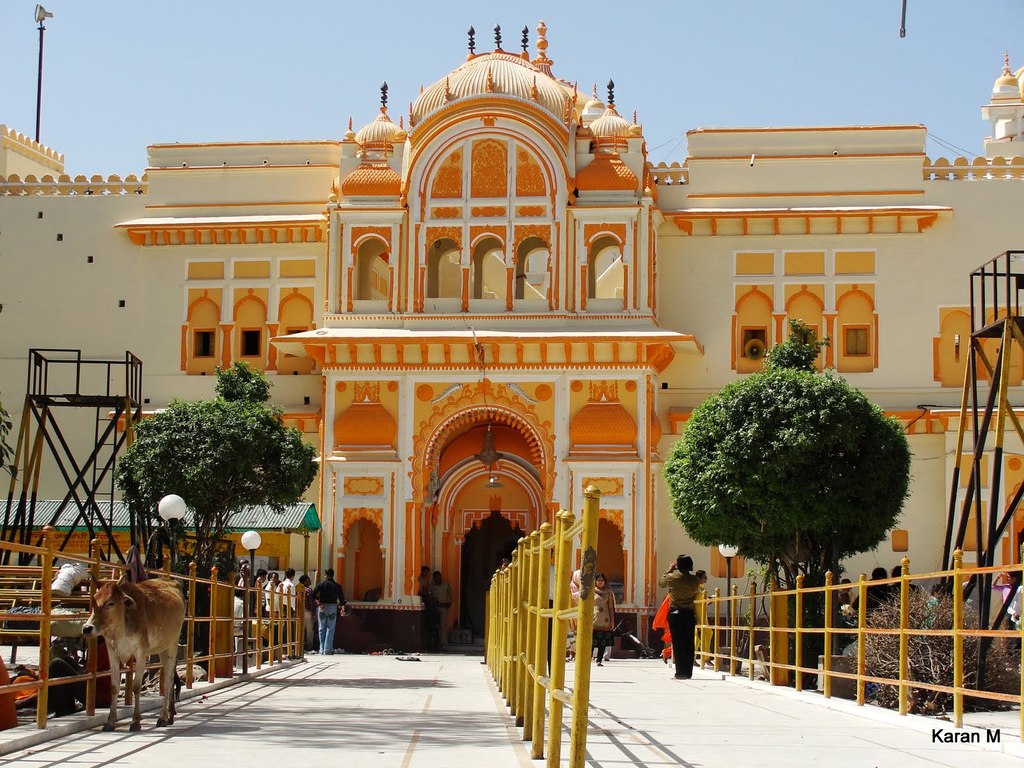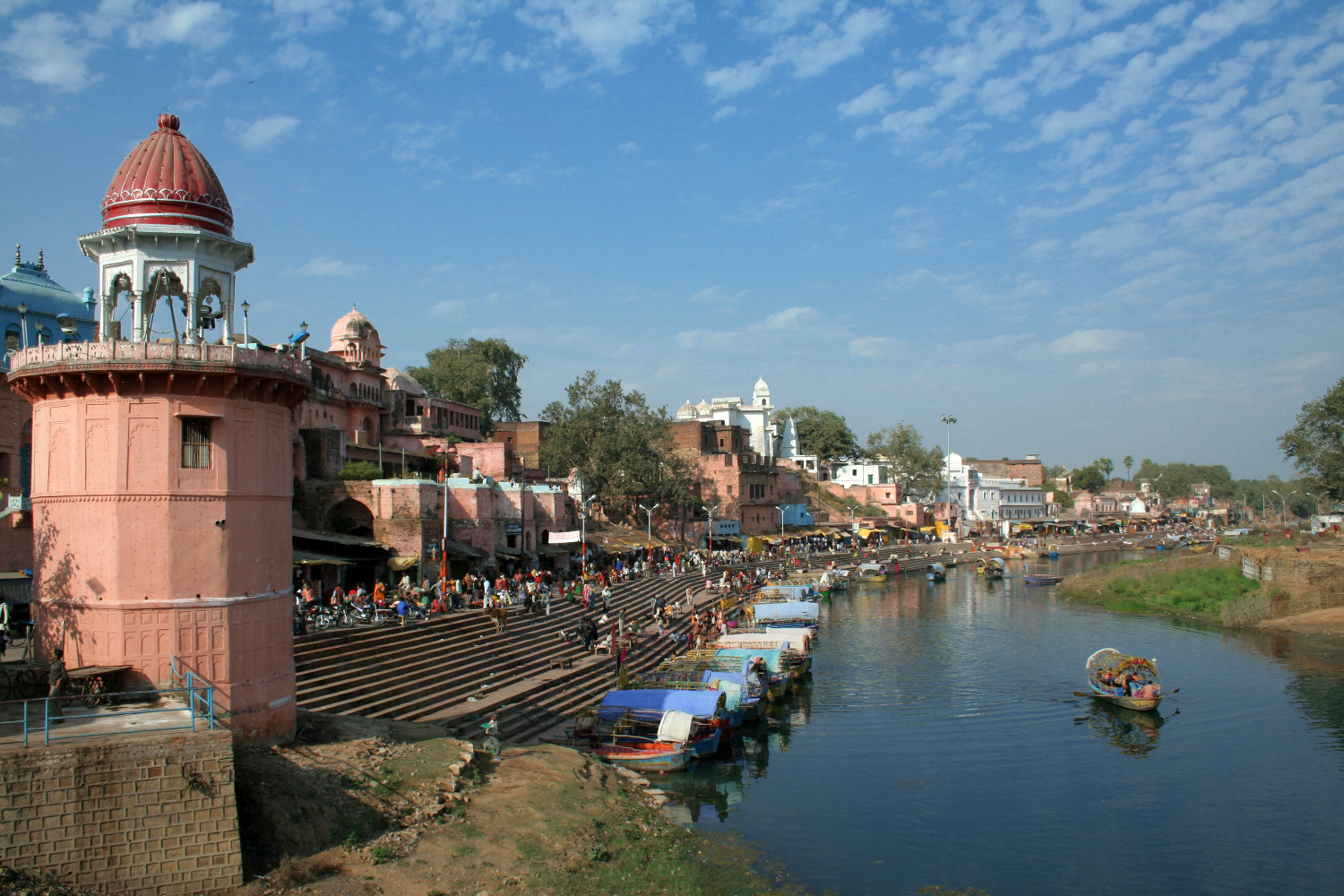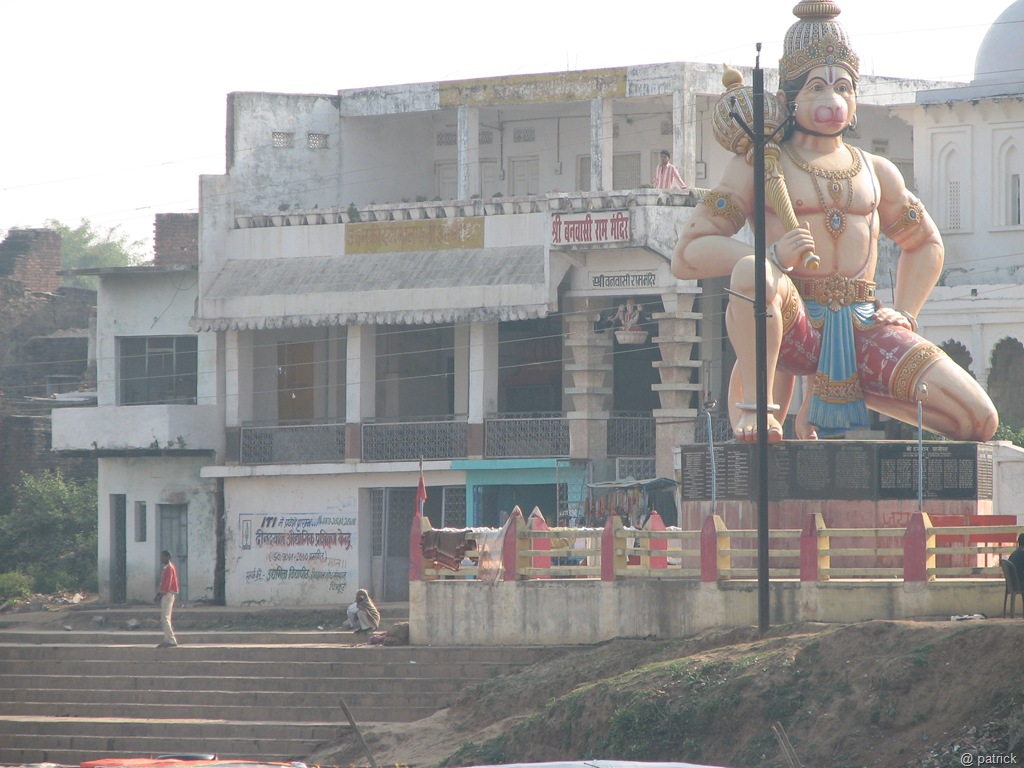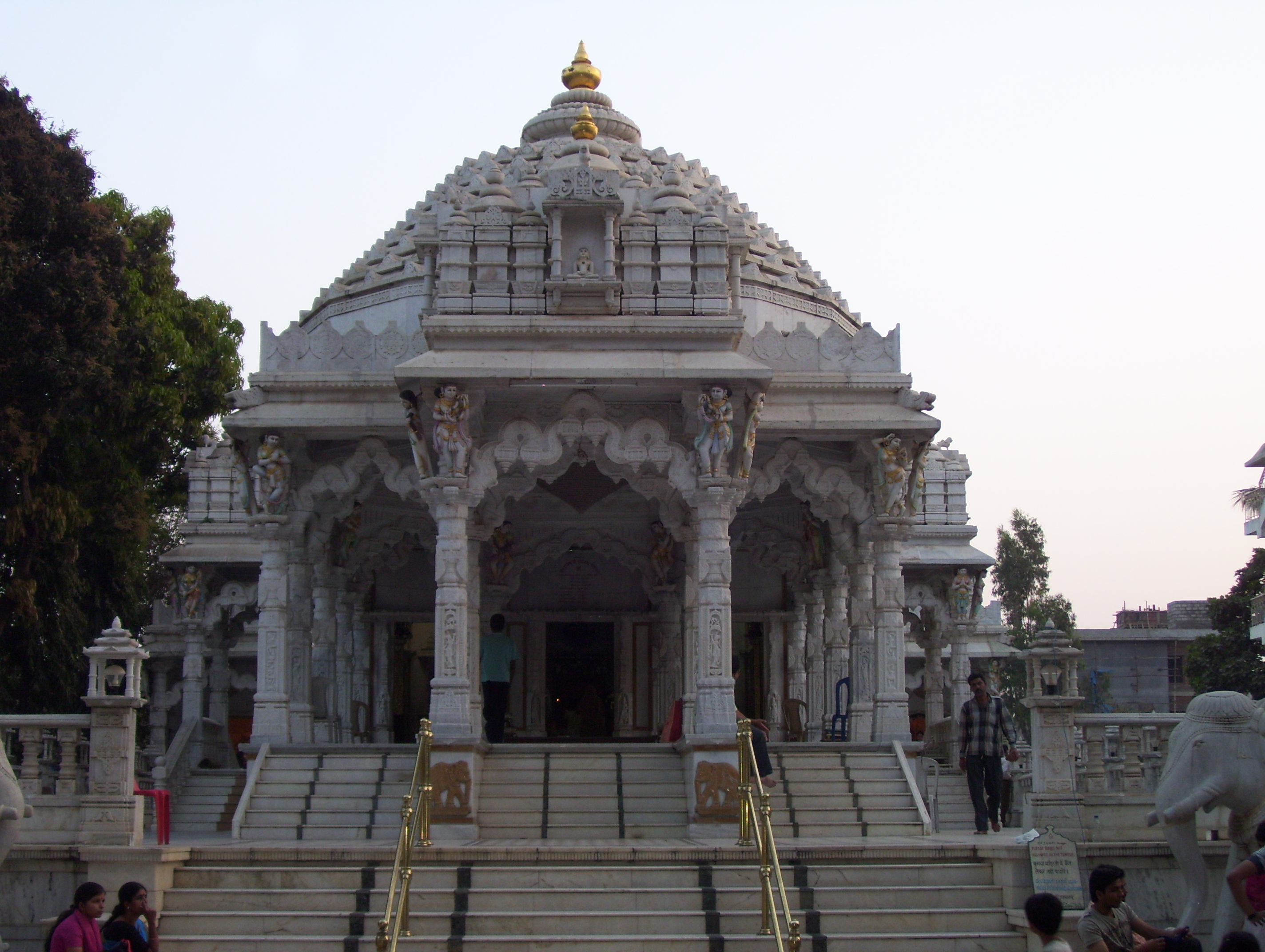Khajuraho, The Eternal Expression of Love
General Information
District:ChhatarpurState:Madhya PradeshCountry:IndiaArea:16.93 Sq. Km.Language Spoken:Hindi and EnglishLong Distance Code:+91-7686Importance:Famous for heritage exotic temple site.Best Time To Visit:October to FebruaryDescription:
Khajuraho, a small dusty and an isolated village in the interior plains of Madhya Pradesh, far away from the hustle bustle of the towns and cities, holds a unique manifestation of art on its temples. The temples of Khajuraho are perhaps the most visited tourist sites after the Taj Mahal in India. The proximity of this small village near Agra has made it a hot tourist destination. Today famous for its erotic sculptures, the temples of Khajuraho tell something more than the eroticism it portrays.
Built in the 10th century by the Chandela kings, the temples of Khajuraho are engulfed in mystery about the reason of their creation. Out of the total 85 temples only 22 remain, but offer a beautiful and extravagant ode to human life. The temples dedicated to the other Hindu deities have a typical Hindu architecture. The sculptures carved outside on façade of the temple walls are intricately carved with minutest of details. The bulk of them appeared in a single sudden burst of creative and religious energy. Why was Khajuraho chosen as the site or why was it deserted is not known. But the sculptures remain to attract thousands till date. But the reason for their creation has always remained a matter of discussion since they were rediscovered by Captain T. S. Burt of the British army in 1838.
There are many stories about the birth of these temples and the reason behind building them. The most famous amongst them is that once a young girl was bathing in a pond on moonlit night. The Moon God who saw her bathing was enthralled with her beauty and taking a human form landed in front of her. Their union produced a son who eventually became to be known as Chandravarman, the founder of the Chandela dynasty. But earlier, his mother had to face the wrath of people and society. Thus after becoming King he decided to build temples which reveal human passions, and in doing so bring about a realization of the void that human desires have. Apart from the mythological aspect the story might be true. Thus the temples tell the truth of life.
Today the temples are portrayed as near to pornographic architecture and many go with the same expectation. The sculptures on these temples are a creed apart and excellence par beyond their imagination. Khajuraho is not a place for the thrill seeking voyeur. It is a place having a remarkable symphony in stone erected in praise of love, life and women. Most tourists are disappointed for they do not get what they had expected. The temples of Khajuraho suggest a simple Hindu theory; to attain salvation one should cross the barriers of all that lures you. Purification of soul and mind is more important than that of body, to be nearer to God. A human has to lead a life with all the good or bad, but the ultimate pleasure is at the feet of the almighty.
The sculptures' themes are varied and all are beautifully carved exhibiting the zenith the art had reached during the reign of the Chandela. Some show animals, some show wars, some show couples in the most erotic form, but most of them show women. Women in their various moods and various ways. Women writing letters, women in seductive poses, women as mothers and women as home makers. It is an ode to woman hood, an ode to fertility, the form of birth and an ode to greatest form of life. The notable thing is that all these sculptures are on the outer portion of the temple walls and not in the inner sanctum. The Hindus pray and worship their deity and then go in circumambulation around and again come to offer their last prayers. It has the essence of Hindu spirituality of tolerance, incorporation and integration and it only denotes that life has everything good and bad, pleasure and displeasure but the ultimate truth is the almighty.Location:
Khajuraho is located in the north eastern part of the state, in the region known as Bundelkhand. The exquisite temples are located on the banks of River Betwa, in the forested plains of Madhya Pradesh, around 380 kms away from the capital city of Bhopal.
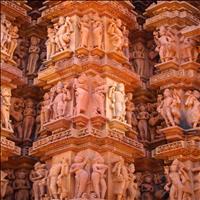 Primarily built in one style the temples have the ardhamandapa or the entrance, the mandapa or the assembly hall, the antarala or the vestibule and finally a pradakshina or a circumambulation running around the grabha griha or the inner sanctum. The temples are divided in three major zones, the western, the eastern and the southern temples of which the western temples are the most popular ones.
Primarily built in one style the temples have the ardhamandapa or the entrance, the mandapa or the assembly hall, the antarala or the vestibule and finally a pradakshina or a circumambulation running around the grabha griha or the inner sanctum. The temples are divided in three major zones, the western, the eastern and the southern temples of which the western temples are the most popular ones.The arch of Kandariya Mahadev shrine has meticulously carved various themes of life. Celestial beings, lovers serenading musicians all the movements captured in stone, frozen in time, yet retaining a quality of warm, pulsating life. The very stone seems to have taken on the living, breathing quality of the carved figures. outer walls have three horizontal panels showing deities of the Hindu pantheon, and groups of lovers, a pageant of sensuousness, vibrantly alive. The Chousat Yogini temple dedicated to kali is also present but without the deity in the sanctum. The Matangeshwara temple is the only shrine used for worshipping. The temple is almost devoid of ornamentation. The Varaha Temple stands opposite the Matangeshwara temple and is dedicated to the fourth incarnation of Lord Vishnu in form of a Boar. The monolithic figure is exquisitely carved with 764 divine figures around it. The Lakshmana Temple, dedicated to the four armed and three headed man-lion-boar statue of Vaikuntha, is the best preserved and the most evolved Vishnu temples. There are sculptures depicting many mythological stories such as the churning of the ocean and Kalia mardan. O n the exterior the entire range of the Khajuraho temples is on display. Ecstatic street singers and the architect of the temples, surrounded by his apprentices are among the noteworthy images on this temple. The Vishwanath temple was supposed to be embedded with jewels, but only a stone lingam is what remains now. The exteriors of this temple however are the most stunningly beautiful. Here one can see nymphs can be seen playing on their flutes, removing thorns from their feet, fondling children and looking into a mirror. Some of the most erotic depictions are seen as well. Another interesting temple is dedicated to the Sun God, the Chitragupta temple. It shows the Sun God driving the chariot drawn by seven horses. The exteriors show, royal processions, elephant-fights, hunting scenes, group dances and the lavish lifestyle of the Chandela kings and their court in its all pomp and glory.
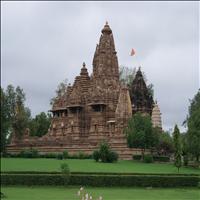 The Brahma and the Hanuman temples are the most famous and well preserved temples of this group. The Vamana temple shows all the ten incarnations of Lord Vishnu.
The Brahma and the Hanuman temples are the most famous and well preserved temples of this group. The Vamana temple shows all the ten incarnations of Lord Vishnu.This place also has a few temples belonging to the Jain religion, probably because one of the descendants of the Chandela dynasty may have adopted Jainism. The prominent among these are the Ghantai temple, the Parsvanath and the Shnatinath temple.
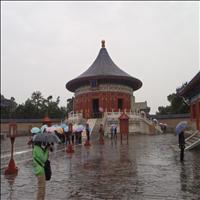 The southern group of temples are less known as they are few kms away from the main village of Khajuraho. The prominent temples in this phase are the Duladeo temple dedicated to Lord Shiva and the Chaturbhuj temple dedicated to Lord Vishnu.
The southern group of temples are less known as they are few kms away from the main village of Khajuraho. The prominent temples in this phase are the Duladeo temple dedicated to Lord Shiva and the Chaturbhuj temple dedicated to Lord Vishnu.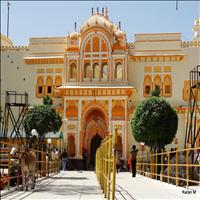 An inevitable journey to Orchha while visiting Khajuraho to or fro Delhi is a delightful surprise. All the routes for Delhi to Khajuraho or Agra to Khajuraho go via Orchha. Orchha now nothing but a small tiny village, is one of those many villages of India which live in obscurity despite having great potential. Orchha some say means hidden, as the Rajput kings were pushed back from their Bundelkhand residence and they resorted to this place, there fore the name , Orchha.
An inevitable journey to Orchha while visiting Khajuraho to or fro Delhi is a delightful surprise. All the routes for Delhi to Khajuraho or Agra to Khajuraho go via Orchha. Orchha now nothing but a small tiny village, is one of those many villages of India which live in obscurity despite having great potential. Orchha some say means hidden, as the Rajput kings were pushed back from their Bundelkhand residence and they resorted to this place, there fore the name , Orchha. Around 170 kms from the erotic temples of Khajuraho this small village must once have been a flourishing empire. The lost empire has left many of its impressions on this village. Situated on the banks of Betwa River, Orchha was founded by the Rajput Chieftain Rudra Pratap in the 16th century. Between 1531 to 1783 it remained the capital of the locally powerful Rajput Kingdom. The subsequent rulers after Rudra Pratap added many structures here which only enhanced the beauty of the previous ones, before finally shifting their capital to Tikamgarh.
The Fort of Orchha is what Orchha is all about. Though almost in ruins, still one can imagine the grandeur of the structure that it must once have been. The most notable king of Orchha was Raja Bir Singh Ju Deo. He built many palace and temples in the fort.
The most important monument inside the fort is the Jehangir Mahal, built to commemorate the visit of Emperor Jehangir to Orchha. The beautiful palace is built in tiers and is crowned by equally beautiful Chhatris on the top. The view from above is just stupendous. Built by Raja Bir Singh Ju Deo, this is the most exquisite palace of the fort.
The Raj Mahal gives a clear picture, of the royalty with which the kings lived. The Raj Mahal still holds some beautiful murals on the walls and the palace gives a spectacular view of the Jehangir Mahal and the Chaturbhuj temple.
This palace turned temple with its soaring spires and palatial architecture is one of the most unusual in India. The Ram Raja Temple, they say was built by accident. An idol of Lord Ram as brought from Ayodhya and installed in this palace initially till the temple was being built. But later on it became impossible to remove the idol and thus this to be palace was made into a sacred place. The actual temple where the idol was to be worshipped still stands as the Chaturbhuj Temple. Lotus emblems and other symbols of religious significance provide the delicate exterior ornamentation. Last but not the least is the Lakshmi Narayan Temple. The interiors are exquisitely beautiful as that of his exteriors. It contains some of the most beautiful murals and paintings of Orchha.
Apart from the famous landmarks the whole area is dotted with big and small shrines and cenotaphs which only add to the beauty of this small place.
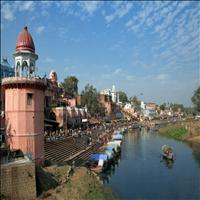 Around 200 kms north of Khajuraho on the border of Uttar Pradesh is Chitrakoot, a most sacred place for the Hindus. It is believed that it was at this place Lord Dattatraya was born as the incarnation of the trinity of the Hindu pantheon, Lord Brahma, Vishnu and Mahesh. Other importance of this is that Ram, Sita and Lakshman spent 11 years of their exile at this very place. The Ram Ghat, the Sita Kund and many such religious places are associate with the stay of Lord Ram here. These places have been graded as sacred points and devotees throng to take a glimpse here.
Around 200 kms north of Khajuraho on the border of Uttar Pradesh is Chitrakoot, a most sacred place for the Hindus. It is believed that it was at this place Lord Dattatraya was born as the incarnation of the trinity of the Hindu pantheon, Lord Brahma, Vishnu and Mahesh. Other importance of this is that Ram, Sita and Lakshman spent 11 years of their exile at this very place. The Ram Ghat, the Sita Kund and many such religious places are associate with the stay of Lord Ram here. These places have been graded as sacred points and devotees throng to take a glimpse here.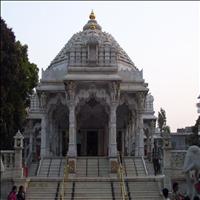 During the Chandella rule, many towns in Bundelkhand including Khajuraho were home to large and flourishing Jain communities. At Khajuraho the Jains apparently lived on the east side of town. A number of Jain temples from that period have survived in this part of Khajuraho in various states of preservation.
All the Jain temples are now enclosed within a compound wall constructed in early 20th century, with the exception of the Ghantai temple.
Adinath temple at KhajurahoTwo of the large temples still stand in a good state of preservation.
Parshvanath temple contains an inscription of 954 AD of builder Pahil, mentioning donation of gardens and requesting future generations to safeguard the temple. It mentions Chandella Dhanga as the reigning king[1].
A well known early magic square is found in this temple[2].
7 12 1 14
2 13 8 11
16 3 10 5
9 6 15 4
This is referred to as the Chautisa Yantra, since each sub-square sums to 34.
Adinath Temple contains an idol with an inscription dated Sam 1215 during the rule of Chandella king Madanavarman.
Shantinath Temple is a modern composite structure that incorporates sections of several temples. It has several shrines. The main section has a 12 foot tall idol of Lord Shantinath with an inscription of Sam. 1085.
Many Jain inscriptions from the Chandella period can be seen at Khajuraho
During the Chandella rule, many towns in Bundelkhand including Khajuraho were home to large and flourishing Jain communities. At Khajuraho the Jains apparently lived on the east side of town. A number of Jain temples from that period have survived in this part of Khajuraho in various states of preservation.
All the Jain temples are now enclosed within a compound wall constructed in early 20th century, with the exception of the Ghantai temple.
Adinath temple at KhajurahoTwo of the large temples still stand in a good state of preservation.
Parshvanath temple contains an inscription of 954 AD of builder Pahil, mentioning donation of gardens and requesting future generations to safeguard the temple. It mentions Chandella Dhanga as the reigning king[1].
A well known early magic square is found in this temple[2].
7 12 1 14
2 13 8 11
16 3 10 5
9 6 15 4
This is referred to as the Chautisa Yantra, since each sub-square sums to 34.
Adinath Temple contains an idol with an inscription dated Sam 1215 during the rule of Chandella king Madanavarman.
Shantinath Temple is a modern composite structure that incorporates sections of several temples. It has several shrines. The main section has a 12 foot tall idol of Lord Shantinath with an inscription of Sam. 1085.
Many Jain inscriptions from the Chandella period can be seen at Khajuraho
